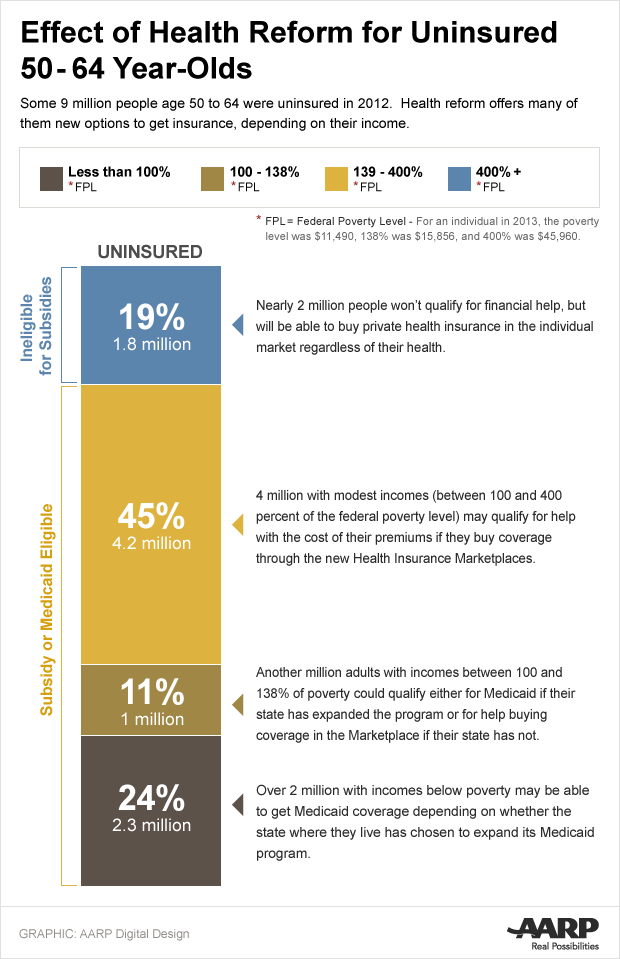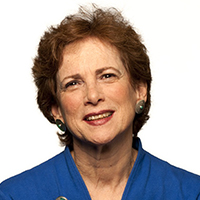AARP Eye Center
Improving the Odds for 9 Million Uninsured Adults Ages 50-64
By Geraldine Smolka, January 8, 2014 11:58 AM

Amid all the criticism of healthcare.gov and Obamacare these days, it's easy to forget that a key goal of the Affordable Care Act (ACA) is to help people get coverage. For people who are uninsured or underinsured, a major accident or illness is more than a health crisis; it's a potential financial disaster. In 2012, 9 million people ages 50 through 64 were uninsured. For these individuals, the Affordable Care Act offers new opportunities for coverage and will help some pay for it. In the past, many people without insurance through their employer - especially people ages 50 through 64 - faced major problems getting insurance on the individual market. The ACA put in place reforms to knock down some of the hurdles. Five major improvements are:
1. People with health problems will be on the same footing as everyone else. Until now, buying private insurance in the individual market has not been a viable option for many older adults with health problems. Some had their applications denied. Others were offered coverage that excluded benefits for their health condition, or faced higher premiums because of their health. As of 2014, insurers cannot deny people insurance because of a preexisting health condition.
2. Older adults will pay more than younger adults, but the difference is capped. Older adults commonly faced premiums that were four or more times higher than those charged to younger adults. Now their premiums cannot be more than three times those of young adults.
3. Shopping for insurance will be easier. The health insurance marketplace - a centralized place for people to compare costs and benefits for a range of plans and apply for subsidies - is available in every state. Instead of having to navigate a complicated insurance market, people have a one-stop place to look for health coverage.
4. Subsidies will help make health insurance more affordable. People who buy their own health insurance in the individual market have traditionally paid the full cost of their insurance bill, while workers with employer-provided plans shared costs with their employer. For the first time, people with modest incomes who buy plans through a marketplace can get financial help with the cost of insurance. Roughly half of uninsured adults ages 50 through 64 in 2012 could qualify for help with premiums based on their income.
5. Public coverage will be a new option for some people. States have the authority to expand Medicaid coverage to poor, childless adults. A third of uninsured adults 50 through 64 in 2012 had incomes low enough to qualify for the Medicaid program. However, only those living in states that have decided to expand Medicaid coverage will benefit.
By expanding access to coverage options and making individual insurance more affordable for many, the ACA has greatly improved the odds of finding coverage and receiving needed care for older uninsured adults.


Gerry Smolka was a senior strategic policy adviser at the AARP Public Policy Institute. Her areas of expertise included private health insurance, the uninsured and Medicare supplemental insurance.























































